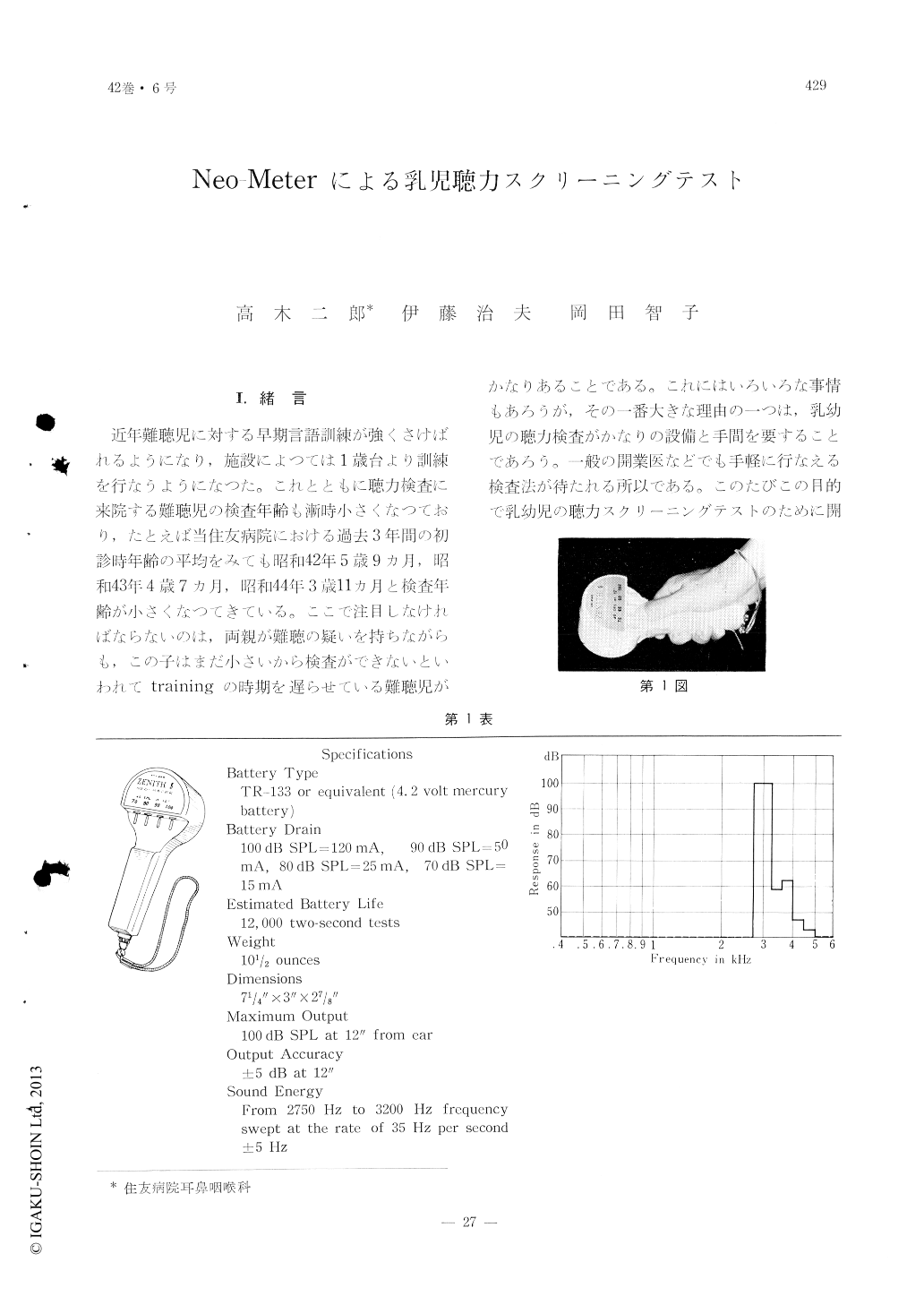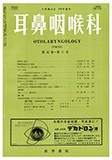Japanese
English
- 有料閲覧
- Abstract 文献概要
- 1ページ目 Look Inside
Ⅰ.緒言
近年難聴児に対する早期言語訓練が強くさけばれるようになり,施設によつては1歳台より訓練を行なうようになつた。これとともに聴力検査に来院する難聴児の検査年齢も漸時小さくなつており,たとえば当住友病院における過去3年間の初診時年齢の平均をみても昭和42年5歳9カ月,昭和43年4歳7カ月,昭和44年3歳11カ月と検査年齢が小さくなつてきている。ここで注目しなければならないのは,両親が難聴の疑いを持ちながらも,この子はまだ小さいから検査ができないといわれてtrainingの時期を遅らせている難聴児がかなりあることである。これにはいろいろな事情もあろうが,その一番大きな理由の一つは,乳幼児の聴力検査がかなりの設備と手間を要することであろう。一般の開業医などでも手軽に行なえる検査法が待たれる所以である。このたびこの目的で乳幼児の聴力スクリーニングテストのために開発されたNeo-Meterを使用して,1歳児未満の乳児のスクリーニングテストを施行したのでここに報告したい。
An audiologic screening test is conducted on 180 infants who were less than 1 year of age by means of neo-meter that emitted warble tone of 3,000 Hz (70-100dB S. P. L.). The results were as follow: (1) The reaction to this stimulation among infants less than 6 months old seemed to be rather poor, but those over and above 7 months showed a satisfactory response in 93% of cases-therefore, if the response in an infant mor than 7 months appeared questionable, presence of hearing impairement may be suspected that will need a further inquiry.
(2) The test is apt to be unsatisfactory at the time when the infant appear to be indisposed which should be avoided.
(3) Various criteria are employed. For infants up to 3 months of age Moro's response and eye responses are used; beyond the 4th month the head turn should be considered as the chief criteria.

Copyright © 1970, Igaku-Shoin Ltd. All rights reserved.


